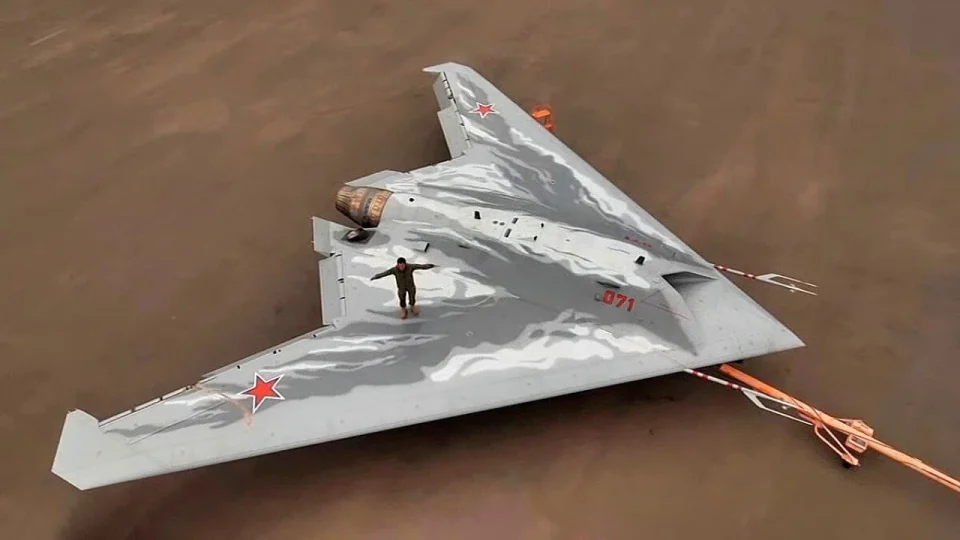When two white vapor trails intersect the sky in eastern Ukraine, it usually signifies that Russian jets are preparing to strike. However, an unprecedented event occurred near Kostyantynivka recently, capturing significant attention.
Witnesses observed the lower vapor trail splitting into two before a new object rapidly accelerated towards the other trail, culminating in a bright orange flash across the sky. Initial theories suggested that this could be a case of friendly fire, with a Russian warplane shooting down another. Alternatively, some speculated it was a Ukrainian aircraft downing a Russian plane.
Further investigation quickly revealed that the object involved in the incident was Russia’s newest weapon—the S-70 stealth combat drone, known as Okhotnik (Hunter). This advanced drone, comparable in size to a fighter jet but devoid of a cockpit, is designed to be difficult to detect, and its developers boast of its uniqueness in the world.
However, it seems that the drone lost its way during the operation. The secondary vapor trail is believed to have originated from a Russian Su-57 jet that was reportedly attempting to regain control over the wayward drone. As both aircraft entered a Ukrainian air defense zone, it is assumed a decision was made to destroy the Okhotnik to prevent it from falling into enemy hands.
Neither Moscow nor Kyiv has officially commented on the episode near Kostyantynivka, but analysts suspect that Russian forces lost control of their drone—possibly due to interference from Ukraine’s electronic warfare systems.
The S-70 is a remarkable piece of military technology, weighing over 20 tons and boasting a range of 6,000 kilometers (3,700 miles). Its design resembles the American X-47B stealth drone developed a decade earlier. The Okhotnik’s capabilities include carrying bombs and missiles for striking ground and aerial targets, as well as conducting reconnaissance missions.
Having been in development since 2012, the Okhotnik had its first flight in 2019, yet it had not been used in the ongoing conflict in Ukraine until now. Earlier this year, sightings of the drone were reported at Akhtubinsk airfield in southern Russia, suggesting this may have been one of its first practical tests in combat.
Notably, wreckage from one of Russia’s long-range D-30 glide bombs was found at the crash site, revealing the drone’s association with sophisticated military operations. Experts suggest that the Su-57 may have sent signals to the drone to strengthen operational coordination.
The failure of the S-70 is considered a significant setback for the Russian military. Initially slated for production this year, the drone’s downfall indicates it may not be ready for deployment after all. While four prototype S-70s are thought to have been constructed, the one downed over Ukraine may have been among the most advanced, even allowing Ukraine to gather valuable intelligence concerning its technology.
By analyzing images from the crash site, experts have speculated that the drone’s stealth features might be limited. The round shape of the engine nozzle could make it detectable by radar, and the presence of numerous rivets likely made from aluminum may compromise its stealth capabilities.
Ukrainian engineers are expected to scrutinize the wreckage intensively, with findings likely shared with Western allies. This incident underscores that Russia is not solely reliant on its massive manpower and conventional weapons; the military is actively seeking modern and innovative approaches to warfare. What has failed this time may pave the way for future successes.
Credit: BBC News





